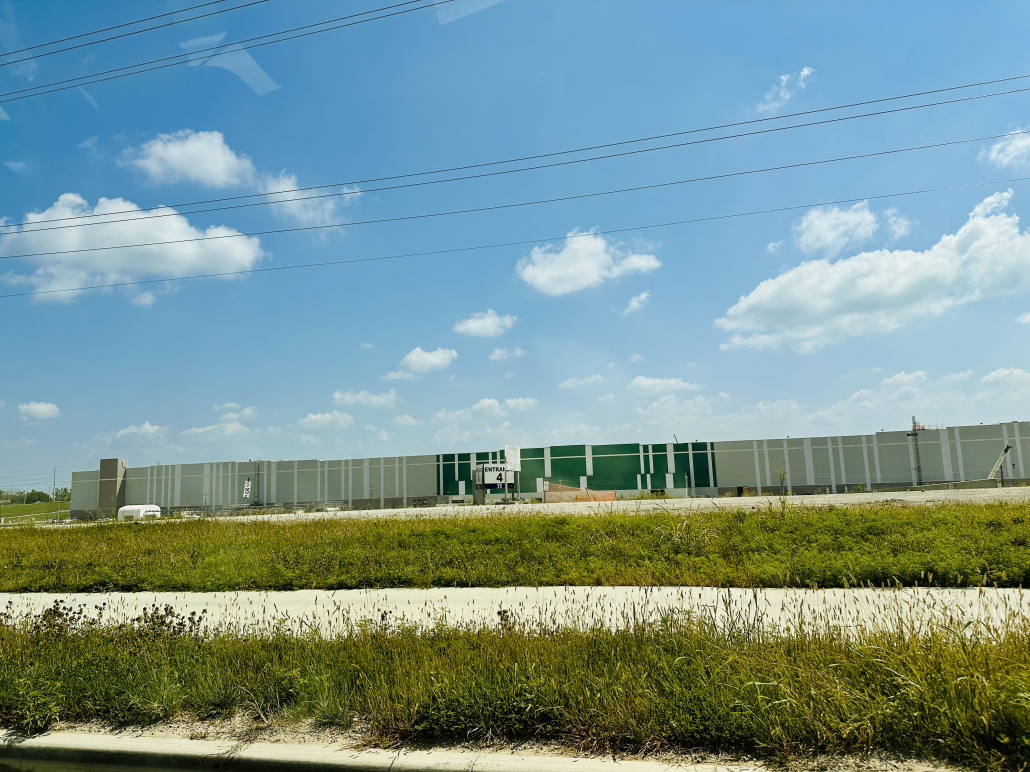Tesla Losing Charge? Sales Decline Signaling EV Market Shift
By Liz Foose

Panasonic’s $4 billion electric vehicle battery plant in De Soto, Kansas recently delayed full-scale production due to declining electric vehicle sales and U.S. policies that do not support EVs.
Tesla, once the undisputed leader of the electric vehicle (EV) market, and the first vehicle manufacturing company in decades to seriously challenge the “Big Three” (Ford, General Motors (GM) and Stellantis/Chrysler) is facing a notable slowdown in demand.
One of the most drastic signs comes from Canada, where in June, Tesla vehicle registrations dropped 67% compared to the previous year. This sharp decline marks Tesla’s weakest Canadian showing since early 2020, when the COVID-19 pandemic first disrupted global auto markets. Several factors may be contributing to the drop, including rising Tesla prices and backlash to CEO Elon Musk’s increasingly polarizing political views.
The downward trend seen in Canada isn’t an isolated case. In the United States, Tesla’s reduced vehicle demand is causing ripple effects across its supply chain. From a local standpoint, Panasonic, Tesla’s longtime battery supplier, recently postponed plans to increase production at the Kansas battery plant due to “slower-than-expected EV demand” from Tesla. The facility was originally constructed to support Tesla’s growing battery needs, but now faces uncertain production schedules, which is a clear sign that demand isn’t meeting earlier expectations.
On the other hand, Tesla’s performance isn’t globally uniform. Tesla continues to see instances of strong performance in some markets. In Norway, a longtime EV leader where electric vehicles captured 97.7% of the market in June, Tesla’s Model Y remained the top-selling vehicle. Additionally, Tesla sales rose 60.7% in Spain. This success seems to have more to do with EV policies and buying trends in these specific countries rather than a global Tesla comeback, considering that Tesla continues to underperform in most other markets relative to previous years. Globally, Tesla’s earnings are down 23% year-over-year in Q2 2025 alone, reflecting a broader slowdown. In Europe, the decline has been especially sharp: compared to June 2024, sales dropped 64.4% in Sweden, 61.6% in Denmark, and 66% in Italy. Overall, Tesla’s new car sales dropped 27.9% across the continent in June alone, marking the fifth consecutive month of decline in Europe.
As vehicle demand decreases, Tesla appears to be redirecting focus toward artificial intelligence and software. Elon Musk recently announced that Tesla’s new AI chatbot “Grok” will integrate with vehicles, potentially offering conversational interaction inside Tesla cars. While this development may improve the brand technologically, it’s unclear whether such features will increase demand, especially considering these aren’t the type of updates customers have been asking for.
Tesla’s recent performance highlights a notable reality: the EV market is maturing, giving consumers more choices than ever, and lessening their tolerance for high prices that come with no added value. While Tesla still holds a strong position in the global EV market, competitors are catching up (and maybe even pulling ahead) in technology and affordability. Relying on past momentum will not be enough; whether through pricing strategy or new models that meet new consumer demands, Tesla will need to reassert its relevance—and soon—to maintain its lead in an increasingly competitive landscape.


